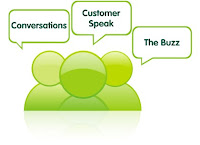The power of controversy is unquestionable. Controversy attracts attention. Even those with opposing views will share a controversial position. Since the beginning of time, controversies have had a subtle appeal to them.
Benford’s law of controversy states that “passion is inversely proportional to the amount of true information available.” In other words, the fewer facts known and agreed on, the more controversy there is. Conversely, the more facts that are known, the less controversy there is.
Humans crave controversy for three reasons. First, controversy makes our lives seem more interesting. Life would be pretty boring if everyone shared the same opinion, so a little polarization activates and stimulates our interest.
Controversy also polarizes and separates us into communities based on our position. Psychologically, ‘sense of community’ is one of the major tenants of self-definition. To be part of the group gives meaning and association with a larger group and provides emotional safety and a sense of belonging and identification.
Controversy disrupts and grabs our attention. In a modern world where it’s so easy to get lost in the noise, controversy breaks through. Challenging someone’s belief or faith causes them naturally to either seek to confirm or disprove the position. But they cannot ignore it. Controversy means you're connecting with people. Controversy means you're leveraging tension and you're creating sides. Controversy means you're relevant, and you're modern, and you're interesting. And modern, relevant and interesting have high ROIs.
While strong opinions do polarize, they also make for strong brands and loyal followers. This largely because taking sides against the “other” is a potent uniting force psychologically. Even more so if there is an identifiable enemy, as it gives us the chance to not only showcase and articulate our faith but also to unite ourselves with our fellow believers. A community united by a common enemy.
We would certainly not suggest a controversial strategy for all brands. Many brands would not benefit from any controversy. On the other hand, there are many other brands where we may suggest, what have you got to lose?
Executed intelligently, contrarian messaging can drive awareness and attention. It just needs to be thoughtfully investigated, well-conceived and perfectly positioned. It’s not for the risk-averse. However, when executed properly can drive far more organic engagement.
P. T. Barnum, the 19th-century American showman and circus owner once said, 'There's no such thing as bad publicity.' Barnum was a self-promoter of the highest order and never missed an opportunity to get people talking. While things may have changed significantly since the days of P. T. Barnum, word of mouth marketing still requires people talking about your brand.
Alan Sorensen, an economics professor at Stanford, looked at book reviews featured in The New York Times. He determined that even when reviews were negative, previously unknown authors saw a one-third bump in sales. We believe his findings can be applied beyond authors to all “small” challenger brands fighting to make names for themselves.
We say “small” because these brands have little to no brand equity to lose. One reason is that, for lesser-known brands, negative perceptions fade more quickly in consumers’ minds than their general awareness of the product," The Economist writes. "With established brands, on the other hand, the whiff of bad publicity lingers longer."
To be clear, there is such a thing as bad publicity. Just ask BP, Nike, Toyota, Volkswagen, or Gillette. When Sanlu was revealed to be selling poisonous milk, it went bankrupt, and its top executives were put in jail. But, if your brands starting point is obscurity, even bad publicity may be helpful.
Today, more than ever, brands need to break through the noise, and one of the most effective ways is by playing the role of an agent provocateur. By creating intelligent controversy, they can guarantee that, while they may be reviled, they’ll not be ignored.
What better example of this than the current President of the United States, Donald Trump? His entire presidency is a (P. T. Barnum’esque) theatrical production designed to keep the nation glued to the media.
The entire spectacle is filled with controversy, conspiracy, collusion and drama all designed for one thing - to keep us watching. It’s all a carefully contrived illusion to keep us focused, and it works. Without risk, there is no reward.


























.jpg)